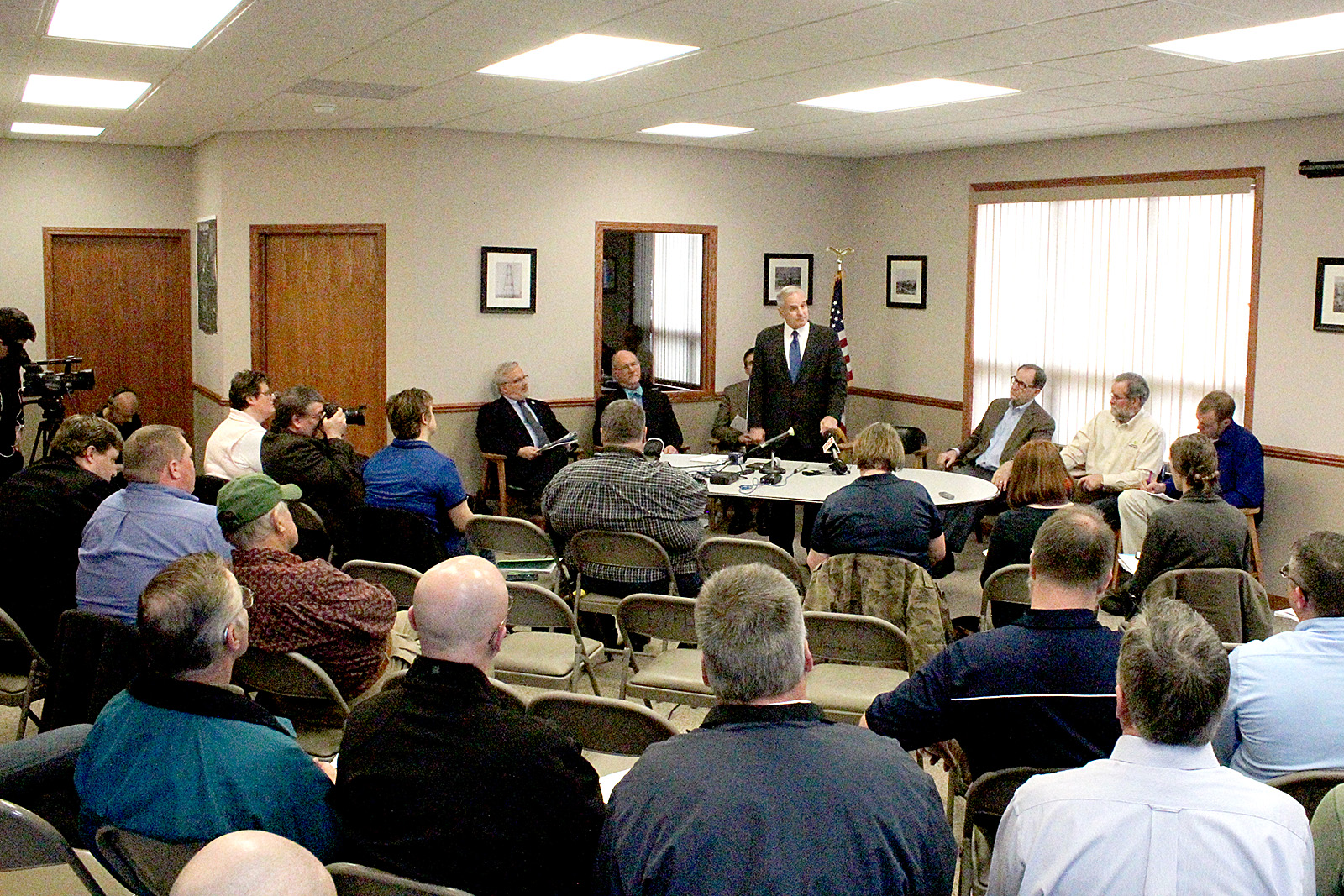
Gov. Mark Dayton was in Edgerton last week to discuss impaired water in southwest Minnesota.
"This is not just an agriculture problem," Dayton said at the March 30 meeting. "We all need to think about what we can do to improve water quality in Minnesota."
Dayton went on to say the problem didn't occur overnight as a result of one contributing factor, and there will be more than one solution to fix it.
“We share that responsibility,” he said about mistakes that were made in the past. “And we share that responsibility for being part of the solution to improve the health and safety of our citizens. … We're all in this together and we need all of the agencies working together.”
Dayton was joined in Edgerton by key members of his cabinet.
Pollution Control Commissioner John Linc Stine referred to “Swimmable, Fishable, Fixable?” an MPCA report that finds that lakes and streams surrounded by heavily farmed areas had high levels of nitrogen, phosphorus and sediment.
Those excess nutrients, primarily from ag runoff, make it difficult to support aquatic life, and in some cases prohibit recreation, Linc Stine said.
“What we do to our lands — what we do in our communities — impacts our water,” he said.
“The way that we got to the water quality conditions in the southwest part of the state took a long time — they’re the result of cumulative efforts and cumulative impact. … The problems are fixable, but it’s going to take the same kind of broad scale, cumulative effort.”
Health Commissioner Dr. Ed Ehlinger pointed to the health impacts of water quality in the region, including the human health impacts of nitrates and phosphorous. He said there are success stories of improved water quality, but he said there's a great deal that can be done by way of targeted well testing in watersheds where high nitrates have been identified.
Board of Water and Soil Resources Director John Jaschke outlined the Conservation Reserve Enhancement Program, buffers, the progress of local implementation of buffers, and Southwest Minnesota’s Clean Water Fund grants.
Agriculture Commissioner Dave Frederickson explained the Ag Water Quality program and encouraged farmers to take advantage of opportunities for low interest loans through the Department’s AgBMP (best management practices) program for conservation tillage, erosion control, manure management and other practices.
Perhaps some of the best spokesmen for these practices were Pipestone County farmer Ian Cunningham and Lyon County farmer Paul Lanoue.
Cunningham's 800-acre livestock and crop operation is an example of soil health and water stewardship that earned him Minnesota's "Agriculture Water Quality Certification," which Frederickson presented to him at the forum.
Cunningham utilizes cover crops, no-till practices, rotational grazing and rotational diversity to maintain the land’s fifth generation of farming.
At the March 30 meeting, he encouraged his fellow farmers to continually seek ways to improve their operations for sustainability.
“What we're doing today isn't what we were doing five years ago,” he said, adding that all good managers in all chosen professions do that. “And I hope what we're doing five years from now we're not doing the same thing.”
As legislation and policies are developed to improve water quality, Cunningham said he hopes landowners and policymakers work together on solutions that best fit each problem — not a one-size-fits-all approach.
Lanoue has installed buffers beyond 16.5 feet and helped to organize a local meeting with hundreds of area landowners to discuss the state’s new buffer law. “We all care about the environment and we all care about the land,” Lanoue said. “We want to make sure there's a future for our farming operations.”
One question from the audience addressed the costs of implementing conservation farming practices.
“What’s it going to set them back, especially at a time when corn is at $4?”
While there are several cost share programs and low interest loans available for various practices, Cunningham said the best approach is to do one thing at a time and build on those practices, because it's an investment that pays in the end.
“It’s not going to set us back a bit. Because it’s going to put us forward,” Cunningham said. “The things that I do help the water infiltrate the soil and be available for the crop, that’s money in the bank. ... Grazing livestock on waterways not feeding them and hauling manure away, that’s money in the bank.”
He also talked about doing the right thing.
“There are lots of things we can do to make things better, and I really bristle at the idea that we need to make some money first and then we’ll worry about taking care of God’s creation,” Cunningham said.
“I like the idea that we’re going to take good care of God’s creation and it will take care of us.”


